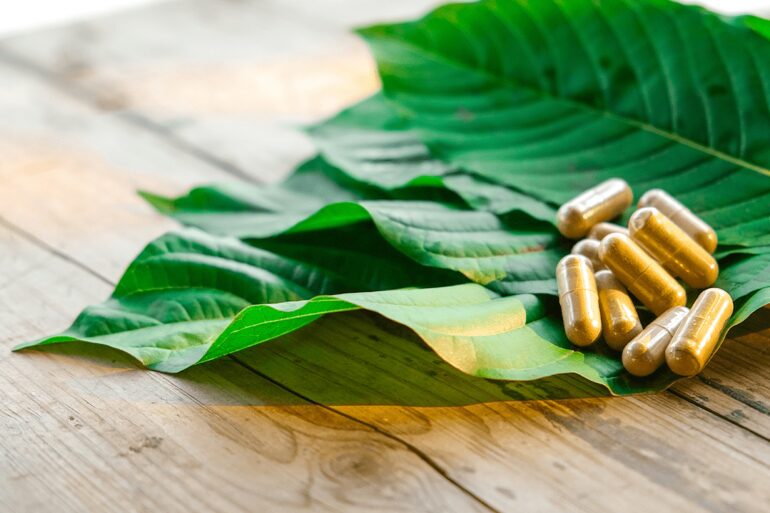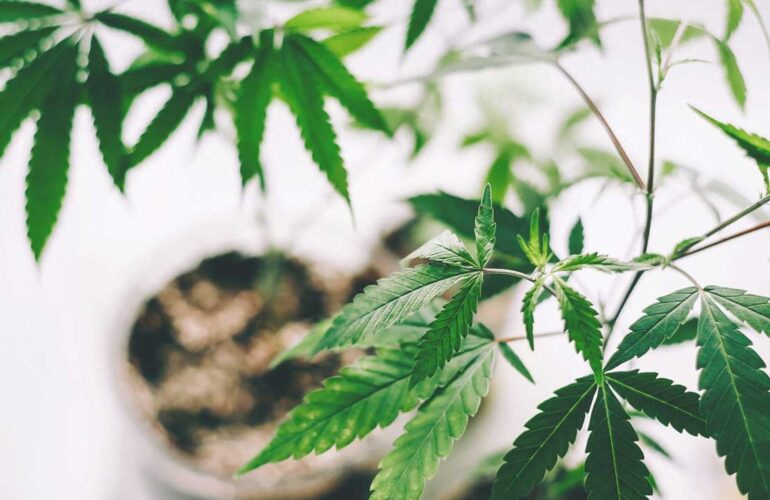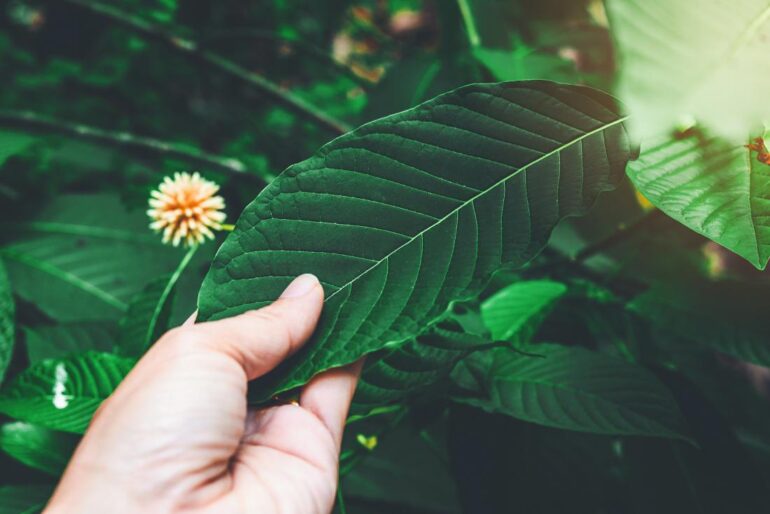As more people explore natural remedies in their health and wellness journeys, certain plant-derived supplements are gaining popularity for their perceived therapeutic benefits. Kratom (Mitragyna speciosa) and cannabidiol (CBD) are two examples that warrant closer examination due to their complex natures.
While kratom and CBD are often lumped together as herbal supplements that provide relief from ailments like chronic pain, anxiety, and insomnia, the realities of their compositions, mechanisms, and regulatory statuses are pretty different.
In this article, we aim to objectively inform readers about the essential contrasts between these two botanicals through a systematic breakdown of their active components, pharmacological actions, historical applications, relevant research findings, and current legal landscapes to empower individuals with a more nuanced understanding of their properties and uses.
What is Kratom – An Overview

Kratom, known by its scientific name Mitragyna speciosa, is a tropical evergreen tree native to Southeast Asia. Kratom leaves have been widely used for centuries as both a stimulant and a pain reliever by people in Thailand, Malaysia, and Indonesia.
While there are a variety of strains of kratom available, one of the most popular is Batak kratom, which is harvested from the leaves of the Mitragyna speciosa tree in Indonesia’s North Sumatra region.
Batak kratom is known for its potent analgesic properties, making it a popular choice among those looking for a natural remedy for chronic pain. However, as with any substance, it is essential to use caution when taking kratom, as misuse can lead to adverse effects.
Kratom powder is the most versatile and commonly used form, typically made by drying and grinding the leaves into a fine powder. Capsules offer a convenient method of consumption, as they contain pre-measured doses of powdered kratom. Extracts are highly concentrated forms of kratom, produced by boiling down the leaves into a potent resin or liquid. Kratom leaves can also be chewed or brewed into tea for consumption. Each form of kratom offers different potency levels and methods of ingestion, catering to individual preferences and needs.
What are the Benefits of Kratom
Kratom is believed to have a variety of benefits, including pain relief, enhanced mood, and increased energy and focus. Kratom leaves contain alkaloids such as mitragynine and 7-hydroxy mitragynine, which are responsible for their psychoactive effects.
These compounds interact with opioid receptors in the brain to produce analgesic and sedative effects. Additionally, kratom can also act as a stimulant at lower doses by interacting with adrenergic receptors.
Apart from its pain-relieving properties, kratom has also been traditionally used for its mood-enhancing effects. It is believed to provide relief from anxiety, depression, and stress by promoting feelings of relaxation and well-being.
Some users also report increased energy and focus after consuming kratom, making it a popular alternative to caffeine-based stimulants.
What is CBD – An Overview
Cannabidiol (CBD) is a naturally occurring compound found in the cannabis plant. Unlike its more well-known cousin, tetrahydrocannabinol (THC), CBD does not produce psychoactive effects and is non-intoxicating.
While CBD can be extracted from both hemp and marijuana plants, it is federally legal in the United States when derived from hemp with a THC content of less than 0.3%.
CBD is commonly used in oils, edibles, topicals, and capsules for its perceived therapeutic benefits. It is believed to interact with the body’s endocannabinoid system (ECS), which helps regulate various bodily functions such as mood, sleep, appetite, and pain.
CBD also has anti-inflammatory properties and can act as an antioxidant, making it a potential treatment for chronic pain, anxiety, inflammation, and seizures.
What are the Benefits of CBD

Due to its interaction with the ECS, CBD is believed to have various potential benefits. It has been studied for its analgesic effects and has shown promise in providing relief from chronic pain conditions such as arthritis, multiple sclerosis, and fibromyalgia.
CBD has also gained attention for its potential impact on mental health. Research suggests that CBD may help alleviate symptoms of anxiety, depression, and post-traumatic stress disorder. It may also have neuroprotective properties that could benefit those with neurological conditions such as epilepsy and Parkinson’s disease.
CBD is also being explored for its potential use in skincare and beauty products due to its anti-inflammatory properties.
Contrasts in Uses and Benefits of Kratom and CBD
While both kratom and CBD have been traditionally used for their pain-relieving properties, they differ in their mechanisms of action. Kratom acts as a partial agonist at opioid receptors, whereas CBD interacts with the ECS to produce its effects.
This difference also accounts for the varying potential side effects of the two substances. Moreover, while kratom is primarily used for its analgesic and mood-enhancing effects, CBD has a broader range of potential uses, including in mental health and skincare.
Additionally, the legal status of these two substances also differs significantly. Kratom is not approved for medicinal use in most countries and is illegal in some. On the other hand, CBD is legal in many countries and has been approved by the FDA for use in treating rare forms of epilepsy.
Analysis – Which One Should You Choose

Ultimately, the decision to use either kratom or CBD should be made after careful consideration and consultation with a healthcare professional. Both substances have potential benefits and risks, and what works for one individual may not.
If you are looking for pain relief, kratom may be a suitable option to explore. However, using it responsibly and in moderation is essential to avoid potential side effects. On the other hand, if you are interested in managing symptoms of anxiety or depression, CBD may be a better choice due to its interaction with the ECS.
